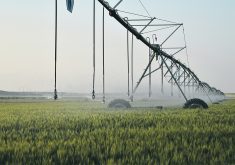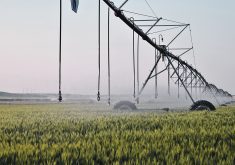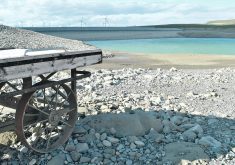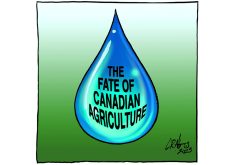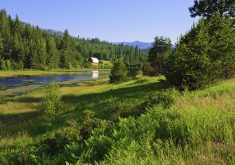Southern Alberta’s rivers are unhealthy, mostly because of an over-allocation of water for irrigation agriculture. Sufficient water at the right time is essential to keep ecosystem processes functioning, fish alive, riparian areas green and create opportunity for other users.
A frontier attitude toward resource use has led to irrigation being allocated half of average river flows. Persistent lobbying effort for irrigation expansion has jumped ahead of reason. Lastly, and key to this discussion, is climate change, which is shrinking the flow in southern Alberta rivers and creating a hotter, drier climate.
Read Also

High prices see cow-calf producers rushing to incorporate
Farm accountants are reporting a steady stream of cow-calf producers rushing to get their operations incorporated ahead of selling their calves this fall.
There is, as well, the usual human hubris. Pretending that we don’t live in an arid climate, that water is abundant and that we can continue to grow an economy based on crops produced by artificial rain from irrigation sprinklers clouds our thinking.
There is a cost to ignoring the reality of changes in our world. Imagine a future where people are showering in public facilities, eating off paper plates to avoid dish washing and collecting infrequent rain water to flush toilets (or using toilets less frequently).
Such a scenario is now playing out in several communities in the Colorado River basin, subject to severe drought brought on by climate change. The future is with us and within our horizons.
With irrigation expansion schemes in the planning phases, supported by both levels of government, maybe this would be a good time to reflect on where we are headed. Does this yellow brick road have risks to southern Alberta communities, to irrigation farmers and to our rivers?
We should ask, is more always better? At what point do we extract so much water from our rivers they no longer exist as rivers in the sense of living ecosystems? We are already at a point where water quality, fish populations and riparian forests are suffering. Those are indicators of over use, even without irrigation expansion.
It would also be good to remember we, as a headwaters province, have obligations to our downstream provincial neighbours and need to share water.
We can applaud the irrigation sector for efforts to use water more efficiently, to reduce wastage, seepage and evaporation. But irrigation efficiency will not rescue our rivers if it allows expansion of irrigated acres and fuels unrealistic expectations among irrigators.
The reality is that a high proportion of irrigation water is poured on thirsty crops like alfalfa. If water is precious and limiting, can we afford to water such crops? Other, more drought-tolerant crops, together with other strategies, might provide a long-term answer to the survivability of irrigation agriculture in arid southern Alberta.
There will be a point where all of our technological and engineering prowess becomes subject to the law of diminishing returns — perhaps it already has. Yes, irrigation efficiency gains and new reservoirs might buffer users from short-term drought. All the same, we cannot hide from the inevitable effects of less water and hotter, drier conditions over prolonged periods.
Current modelling shows that with just two back-to-back drought years, there is not enough storage capacity in today’s reservoirs to meet demands. We can’t build enough capacity to outrun climate change. That the huge reservoirs on the Colorado River could not provide enough storage to weather drought, we would do well to heed.
Irrigation farmers would be well advised that staring into the expansion sun might blind them to the inherent risks of running out of water. Irrigation expansion in the context of a declining supply of water lies on the razor’s edge between optimism and delusion, between audacity and foolishness and between imagination and flimflammery.




